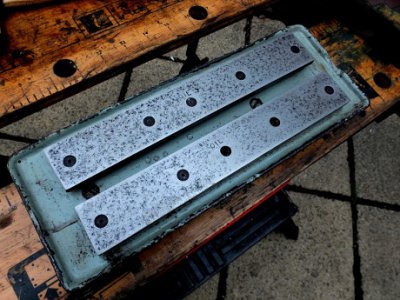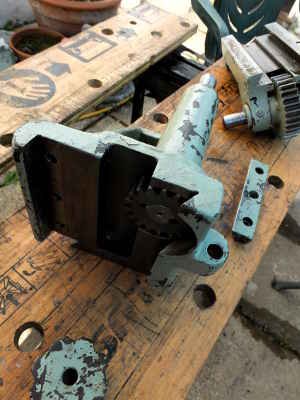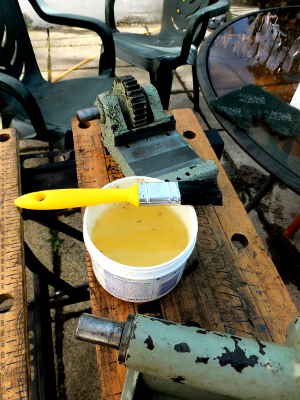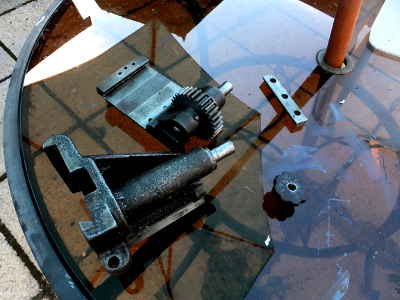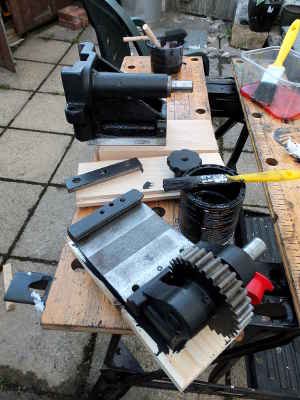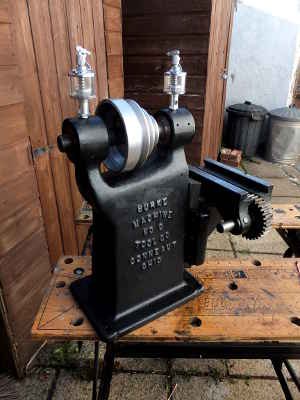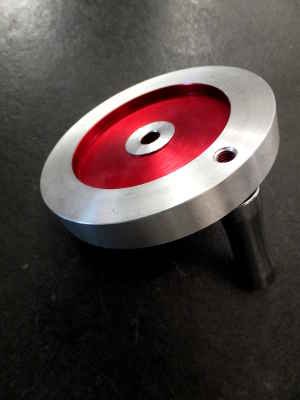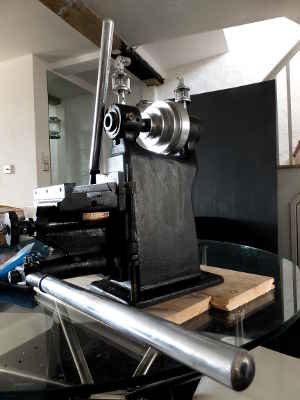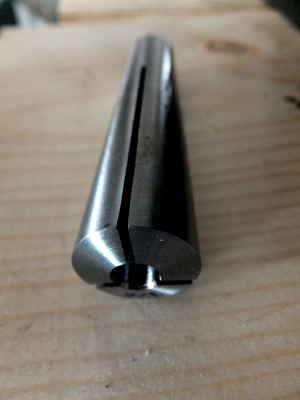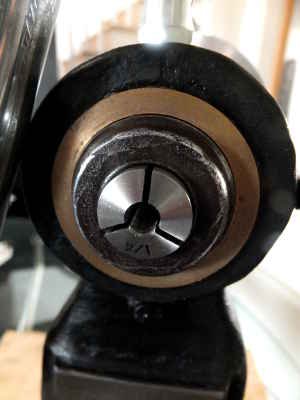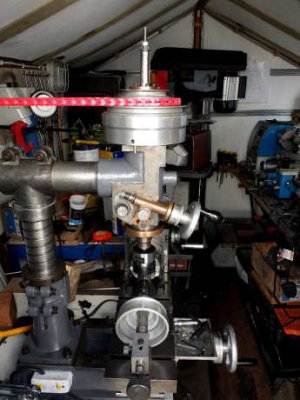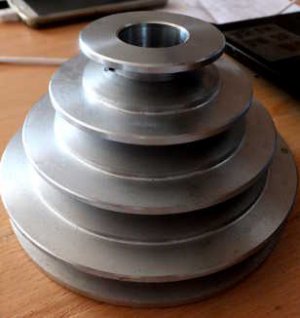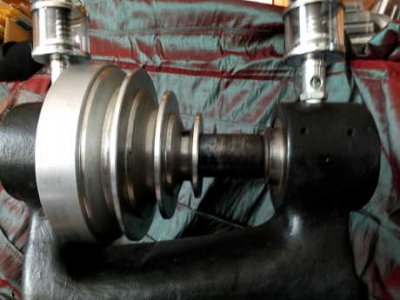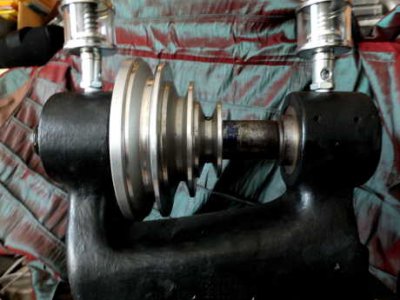Thanks for the likes, guys. Very kind of you.
And now to handwheels - a new one for the Z-axis and the original one for the Y-axis. I took the shiny red handwheel pictured a few posts above and faced it off roughly in the lathe to lose the red. I then milled two curved slots in it using a rotary table on the Dore Westbury, after which I gave it a few finishing passes in the lathe. The bore was then widened to fit the z-axis shaft which controls the rack and pinion lifting mechanism for the knee. Finally, I gave it a polish:
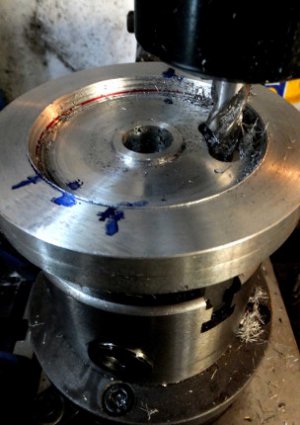
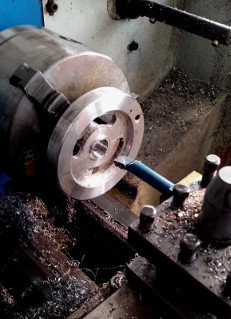
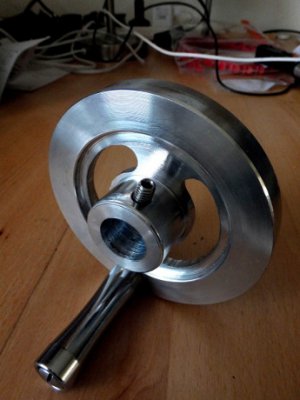
Now, in the picture below two things are apparent. One is the condition of the table prior to it being cleaned up, and the other is the way that a previous owner had mounted the existing Y-axis handwheel. A collar - which was too wide for the shaft - had been inserted behind the handwheel. This caused the handwheel to sit too far out on its shaft so that the cap-head screw that you can see in the picture did not sit in the locating point and the threaded section at the end of the shaft did not protrude out of the bore of the wheel:
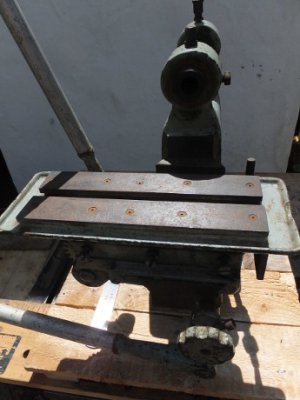
I replaced the cap head screw with a grub screw and got rid of the offending collar, allowing the grub screw to rest in the locating point. This also gave some clearance to the shaft so I was able to finish off its threaded end with a couple of washers and a domed nut. The picture below shows both handwheels (existing and new) properly in situ. The new handwheel can be easily removed and so can be regarded as interchangeable with the original lever. The boss was already pre-drilled and tapped so I drilled a corresponding locating point in the shaft for a grub screw:
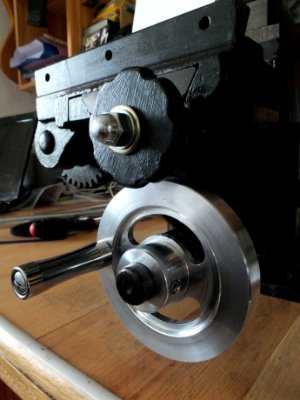
To finish off a good day of progress, I got going on the table with WD-40, Scotch-Brite and sandpaper. A tedious task, it has to be said. The picture below shows the result and that's as far as I'm going to go with it. The machine is possibly 100-plus years old, so why kill myself trying to make it look brand new? IMHO the residual patina looks good anyway. The surrounding table casting will of course be painted black. Incidentally, despite soaking the table in kerosene for two weeks and then drowning it several times in WD-40, I couldn't take it down any further as the screws holding the flat strips to the casting just wouldn't come out without me chewing their heads. I decided just to leave well alone...
